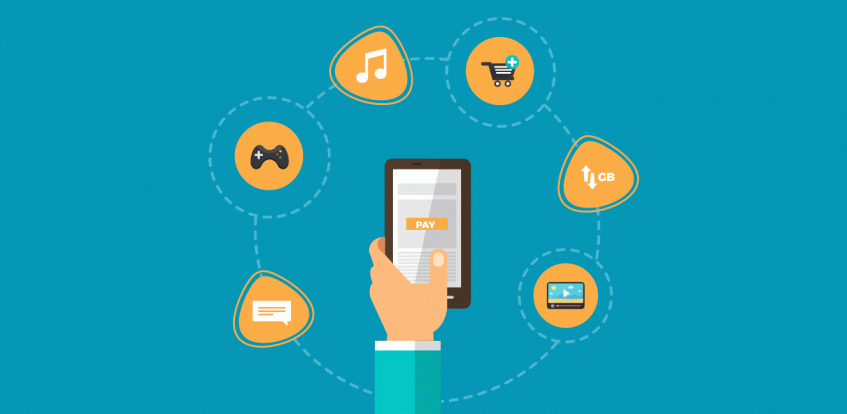North America Direct Carrier Billing Market: Simplifying Mobile Payments for the Digital Economy

The North America direct carrier billing market is poised for robust growth as digital content consumption, mobile commerce, and app-based purchases continue to surge. With its simplicity, enhanced security, and the ability to reach users without bank accounts, direct carrier billing (DCB) has become an indispensable payment method for both consumers and businesses.
Market Overview
The North America direct carrier billing market was valued at US$ 3,980.2 million in 2019 and is projected to grow to US$ 7,688.5 million by 2027, registering a CAGR of 8.7% from 2020 to 2027. The market’s upward trajectory is fueled by increased smartphone penetration, demand for frictionless payment solutions, and the rising popularity of subscription-based digital services.
Key Market Drivers
- Growing Digital Content Ecosystem
The rise of mobile gaming, video streaming platforms like Netflix and Disney+, and music services such as Spotify is propelling the demand for seamless payment systems. DCB allows users to pay for subscriptions or content directly through their mobile operator, bypassing traditional banking systems. - Increased Smartphone and Mobile Internet Usage
With smartphone penetration exceeding 85% across the U.S. and Canada, mobile devices are now the dominant platform for content consumption and e-commerce. DCB benefits from this trend by offering a native, mobile-first payment option. - Unbanked and Underbanked Population
Although North America is largely banked, a notable segment—especially among youth, migrants, and low-income groups—lacks access to credit or bank accounts. Direct carrier billing serves as a vital bridge, enabling digital purchases through telecom billing. - Enhanced Security and Privacy
Direct carrier billing adds a layer of security by eliminating the need for users to share sensitive financial information. This is especially appealing in the age of cyber threats and data breaches.
Market Segmentation Analysis
- By Type:
The market includes limited DCB (for specific services like digital goods) and pure DCB (which covers a wider range of products and services). Pure DCB is gaining momentum as telecom operators expand their partnerships. - By Platform:
Direct carrier billing is widely used across Android and iOS platforms, with Google Play being a major contributor due to its large base of freemium apps and games. - By Content Type:
Key segments include gaming, video, music, eBooks, and online learning platforms. Among these, gaming holds the largest share, with users making frequent low-value purchases via DCB.
Regional Insights
The United States holds the largest market share, followed by Canada. Key growth cities include:
- New York, San Francisco, and Toronto – driven by tech-savvy consumers and strong mobile infrastructure.
- Midwestern and rural U.S. regions – where DCB provides access to digital services for populations with limited banking coverage.
Key Players and Competitive Landscape
The North America direct carrier billing market is moderately consolidated with a mix of telecom operators, billing aggregators, and digital content platforms. Leading players include:
- Boku, Inc.
- DIMOCO
- Fortumo (now part of Boku)
- T-Mobile US, Inc.
- AT&T Inc.
- Verizon Communications Inc.
These companies are focused on expanding DCB support beyond entertainment into areas like transportation, parking, ticketing, and healthcare services.
Challenges in the Market
Despite its benefits, the market faces a few roadblocks:
- High Carrier Fees:
Telecom operators often charge fees of up to 30–50% per transaction, making DCB less attractive for some merchants. - Regulatory Hurdles:
Compliance with regional financial and telecom regulations can slow down expansion, particularly for cross-border services. - Limited Awareness and Integration:
Some merchants and consumers remain unaware of DCB as a payment option, requiring better education and UX integration.
Future Outlook
The future of the North America direct carrier billing market looks promising. As 5G and IoT devices gain momentum, DCB is expected to expand into smart TV services, wearable apps, and in-vehicle purchases. Continued innovation, combined with more favorable revenue-sharing models, will further enhance adoption rates.
As the mobile-first economy evolves, DCB’s frictionless, secure, and accessible payment model will continue to attract a growing number of users and businesses across North America.
Top 10 Short FAQs – North America Direct Carrier Billing Market
- What was the size of the North America direct carrier billing market in 2019?
US$ 3,980.2 million. - What is the projected market size by 2027?
US$ 7,688.5 million. - What is the CAGR for 2020 to 2027?
8.7%. - Which country leads in direct carrier billing adoption?
The United States. - What sectors use DCB the most?
Primarily gaming, streaming, and mobile contentservices. - Why is DCB appealing to unbanked users?
It requires no credit card or bank account—just a mobile number. - Who are the key DCB service providers?
Boku, Fortumo, DIMOCO, Verizon, AT&T, and T-Mobile. - Is DCB safe for users?
Yes, it's considered secureas no personal banking data is shared. - What are the limitations of DCB?
High carrier feesand limited merchant awareness. - What’s the outlook for DCB in North America?
Strong growthexpected, especially with 5G and IoT expansion.



Comments
Post a Comment